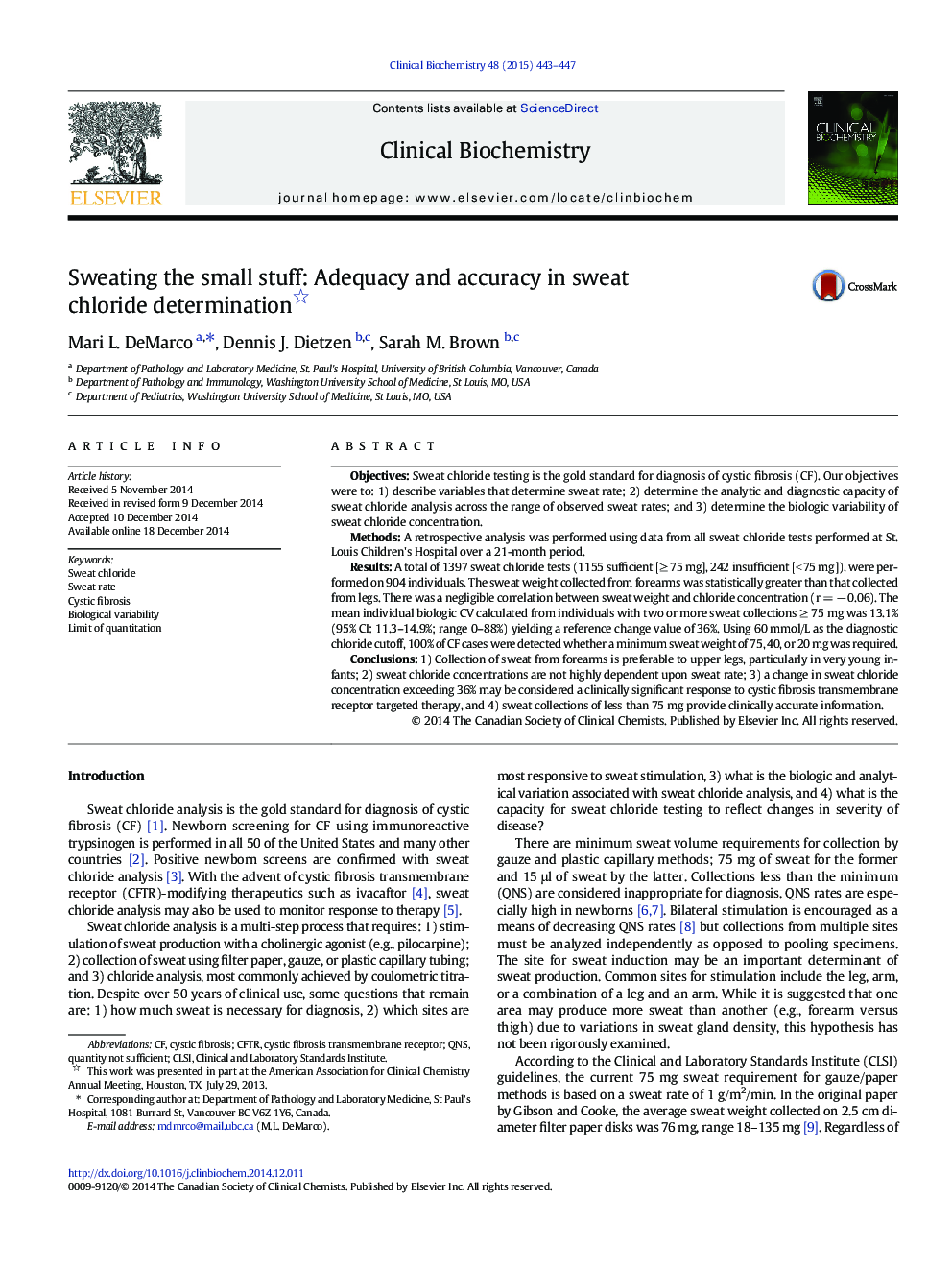| کد مقاله | کد نشریه | سال انتشار | مقاله انگلیسی | نسخه تمام متن |
|---|---|---|---|---|
| 1968489 | 1059721 | 2015 | 5 صفحه PDF | دانلود رایگان |
• Sweat chloride concentrations are not highly dependent upon sweat rate
• Sweat collections of less than 75 mg provide clinically accurate information
• Arms generate more sweat than legs, independent of patient age
• Serial sweat chloride results that differ by > 36% may be clinically significant
ObjectivesSweat chloride testing is the gold standard for diagnosis of cystic fibrosis (CF). Our objectives were to: 1) describe variables that determine sweat rate; 2) determine the analytic and diagnostic capacity of sweat chloride analysis across the range of observed sweat rates; and 3) determine the biologic variability of sweat chloride concentration.MethodsA retrospective analysis was performed using data from all sweat chloride tests performed at St. Louis Children's Hospital over a 21-month period.ResultsA total of 1397 sweat chloride tests (1155 sufficient [≥ 75 mg], 242 insufficient [< 75 mg]), were performed on 904 individuals. The sweat weight collected from forearms was statistically greater than that collected from legs. There was a negligible correlation between sweat weight and chloride concentration (r = − 0.06). The mean individual biologic CV calculated from individuals with two or more sweat collections ≥ 75 mg was 13.1% (95% CI: 11.3–14.9%; range 0–88%) yielding a reference change value of 36%. Using 60 mmol/L as the diagnostic chloride cutoff, 100% of CF cases were detected whether a minimum sweat weight of 75, 40, or 20 mg was required.Conclusions1) Collection of sweat from forearms is preferable to upper legs, particularly in very young infants; 2) sweat chloride concentrations are not highly dependent upon sweat rate; 3) a change in sweat chloride concentration exceeding 36% may be considered a clinically significant response to cystic fibrosis transmembrane receptor targeted therapy, and 4) sweat collections of less than 75 mg provide clinically accurate information.
Figure optionsDownload as PowerPoint slide
Journal: Clinical Biochemistry - Volume 48, Issue 6, April 2015, Pages 443–447
